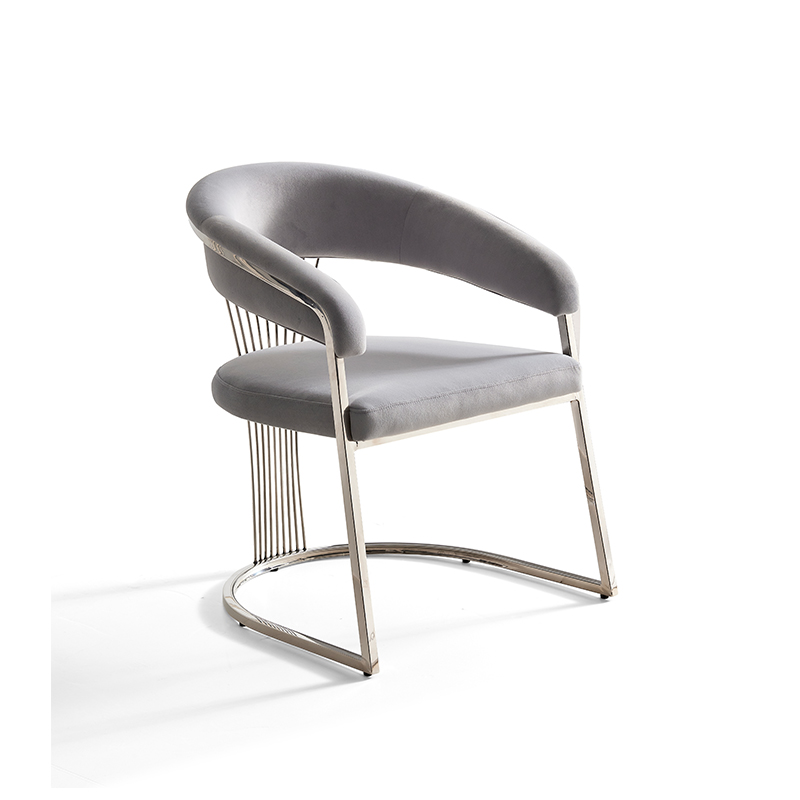How To Recover A Dining Room Chair?
Recovering a dining room chair is one of the simplest and most cost-effective ways to refresh your dining space. Whether your chairs are worn, stained, or simply outdated, reupholstering the seats can instantly restore their comfort and appearance. This process doesn’t always require professional help — with a few tools, the right materials, and careful attention to detail, you can achieve a polished, long-lasting result at home.
In this guide, we’ll explain how to recover a dining room chair step-by-step, covering everything from material selection to reassembly, along with practical tips to ensure a professional finish that fits your décor and table height perfectly.
1. Why Recovering a Dining Chair Is Worth Doing
Before beginning, it’s worth understanding why recovering is more than just a cosmetic update. A well-executed reupholstery project can:
Extend the lifespan of your furniture by replacing damaged padding and fabric.
Enhance comfort through the use of modern foams and supportive materials.
Upgrade aesthetics to match evolving interior styles, from classic to modern minimalism.
Reduce waste and cost, offering an eco-friendly alternative to buying new chairs.
Allow personalization, giving you control over colors, textures, and finishes that reflect your taste.
For dining rooms, where visual harmony and comfort are key, recovering chairs provides a quick and impactful way to modernize the entire setting without replacing your furniture set.
2. Tools and Materials You’ll Need
To achieve a clean, durable reupholstery result, preparation is essential. Here’s what you’ll need before starting:
Tools:
Staple gun (manual or pneumatic)
Flathead screwdriver or staple remover
Scissors or rotary cutter
Measuring tape
Pliers
Drill or wrench (for removing seat screws)
Upholstery needle and thread (optional for edge tacking)
Materials:
New upholstery fabric – choose durable, easy-to-clean material suitable for dining use.
Foam cushion – typically 1–2 inches thick for comfort and support.
Batting (optional) – adds softness and smooths fabric edges.
Staples – stainless or galvanized staples for long-term hold.
Spray adhesive – helps fix foam to the baseboard.
Tip: For high-traffic dining spaces, consider fabrics like polyester blends, vinyl, microfiber, or treated cotton-linen that resist stains and abrasion.
3. Step-by-Step Process to Recover a Dining Room Chair
Step 1: Remove the Seat
Turn the chair upside down and locate the screws attaching the seat to the frame.
Use a drill or screwdriver to remove them carefully, keeping the screws in a labeled container.
If your chair has attached upholstery (like a fully padded back), detach gently to avoid damaging the wood or finish.
Step 2: Take Off the Old Fabric
Using a flathead screwdriver or staple remover, remove the old staples from the underside of the seat.
Peel away the old fabric and inspect the foam padding.
If the foam is still firm and clean, it can be reused; otherwise, replace it with fresh material of the same thickness.
This step also allows you to use the old fabric as a template for cutting your new material.
Step 3: Cut the New Foam and Fabric
Lay the seat base on top of the foam and trace its outline. Cut the foam slightly larger than the base to ensure full coverage.
Next, place the foam on your new fabric and add an extra 3–4 inches of fabric overlap on all sides.
This extra allowance will be used for wrapping and stapling underneath.
Step 4: Attach the Foam to the Seat Base
Use spray adhesive to attach the foam securely to the seat base (usually plywood or MDF).
Let it dry for a few minutes before proceeding.
If using batting, place it over the foam for a smoother contour and additional softness.
Step 5: Stretch and Staple the Fabric
Place the fabric face down on a flat surface, then position the foam-covered seat upside down on top of it.
Start by pulling the fabric tightly over one side and stapling it to the underside of the seat.
Then move to the opposite side, stretching the fabric evenly to maintain tension.
Repeat for all four sides, working from the center outward to the corners.
Important: Avoid wrinkles by keeping the tension balanced. The goal is a smooth, firm surface without visible puckering.
Step 6: Handle the Corners
Corners require patience and neat folding.
For rounded corners, pull the fabric gradually in small sections, overlapping slightly for a seamless curve.
For square corners, fold as you would wrap a gift — tuck in the edges neatly before stapling down.
Trim any excess fabric once secured.
Step 7: Reattach the Seat to the Chair Frame
Once the fabric is secured, align the seat base back onto the chair frame and reinsert the screws you saved earlier.
Tighten securely, making sure the seat is centered and stable.
Your newly recovered dining chair is now ready for use — comfortable, stylish, and built to last.
4. Choosing the Right Fabric for Dining Room Use
The type of fabric you select influences both durability and visual appeal. Dining chairs face frequent use and potential spills, so functionality and texture matter as much as style.
a) Cotton and Linen
Natural fibers with excellent breathability, suitable for casual or farmhouse-style dining rooms.
They’re soft to the touch but require stain protection or fabric guard spray for longevity.
b) Polyester and Synthetic Blends
Durable, fade-resistant, and easy to clean.
Ideal for modern homes or restaurants that require low maintenance.
c) Velvet and Suede
Add luxury and visual warmth but need more care.
Best used in formal dining spaces or low-traffic areas.
d) Vinyl and Faux Leather
Highly practical for family dining rooms — waterproof, easy to wipe clean, and available in various colors.
They mimic genuine leather at a fraction of the cost.
e) Performance Upholstery
Engineered fabrics that combine water resistance, antimicrobial treatment, and UV protection.
They’re perfect for busy households or open-plan kitchens exposed to sunlight.
When in doubt, always test your chosen fabric for color fastness and durability, ensuring it matches both your interior palette and lifestyle needs.
5. Tips for Professional-Level Finishing
Recovering a chair can look handmade or high-end depending on finishing details.
Here are some expert tips to make your project look professionally upholstered:
Maintain consistent tension – uneven pulling can distort fabric patterns.
Align patterns or stripes – visually align lines or motifs across multiple chairs for a uniform look.
Double-staple seams – add extra staples on corners or high-stress areas for reinforcement.
Trim excess material – leave about ½ inch after stapling to prevent bulk.
Add dust covers (optional) – staple a thin fabric underneath to conceal raw edges and give a refined appearance.
Use quality staples – stainless or rust-proof staples prevent corrosion over time, especially in humid environments.
A good upholstery finish is both functional and elegant, reflecting craftsmanship and attention to detail.
6. Common Mistakes to Avoid
Many first-time DIY upholsterers make errors that can compromise durability or appearance.
Avoid these common issues:
Using the wrong fabric size: Always buy at least 20% more material than measured to allow for corrections.
Not cleaning the frame first: Dust and old adhesive can prevent tight stapling.
Overstretching fabric: Excessive tension may tear material or distort patterns.
Uneven padding: Unequal foam thickness causes an unbalanced seat and early wear.
Skipping batting: It smooths edges and prevents visible foam lines under the fabric.
Loose corners: Take time folding corners neatly; they define the chair’s finish.
Attention to these details transforms a simple reupholstery job into a long-lasting restoration.
7. Styling Ideas for Recovered Dining Chairs
Once the practical work is done, it’s time to focus on style and design coherence. Recovered chairs can completely redefine your dining area’s aesthetic.
Here are a few popular styling directions:
a) Classic Elegance
Use neutral fabrics like beige linen or soft velvet with nailhead trim for a timeless, sophisticated look.
Pairs beautifully with dark wood or marble Dining Tables.
b) Modern Minimalism
Opt for sleek microfiber, leatherette, or monochrome tones.
Combine with metal or glass dining tables for clean, contemporary appeal.
c) Rustic or Farmhouse Style
Choose woven cottons, plaid patterns, or textured linen in earthy tones.
These fabrics complement wooden tables and vintage décor.
d) Eclectic or Artistic Approach
Mix bold colors and geometric patterns across chairs to create visual variety while maintaining comfort and symmetry.
e) Luxury Upholstery
For statement pieces, use tufted designs or dual-tone fabrics with soft sheen finishes — ideal for formal dining rooms or hotel environments.
The beauty of recovering is that you can personalize each chair’s look while maintaining harmony across the set.
8. Maintenance After Recovering
To extend the life of your newly upholstered chairs:
Vacuum regularly using a soft brush attachment to remove crumbs and dust.
Clean spills immediately with a damp cloth and mild soap; avoid soaking.
Rotate chairs around the table occasionally to ensure even wear.
Apply fabric protector every six months to maintain resistance to stains.
Inspect staples or seams annually and re-secure if needed.
These small maintenance steps preserve both the fabric’s texture and the structure beneath.
Conclusion
Recovering a dining room chair is an achievable project that blends creativity, craftsmanship, and practicality.
By selecting the right materials, following a structured process, and paying attention to details, you can revive worn-out chairs into stylish, comfortable pieces that enhance your dining experience.
Whether your goal is to restore classic furniture, update modern décor, or simply add new life to an old set, reupholstering delivers lasting results with minimal cost and maximum satisfaction.
Each recovered chair becomes a reflection of your personal style — combining comfort, durability, and beauty in one functional design centerpiece.
Previous: How To Build A Dining Room Chair?




